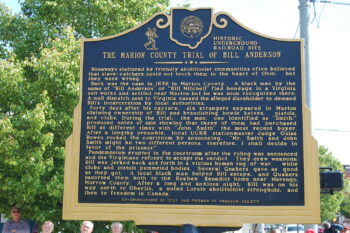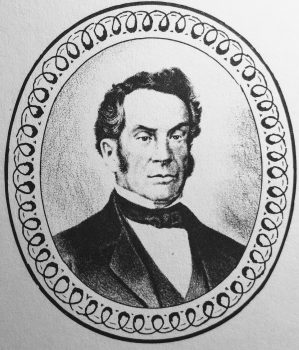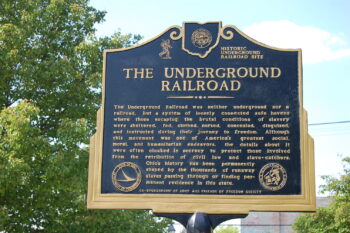One court case about a local man’s freedom made history. The historical marker for the trial of Bill Anderson in 1839 stands in downtown Marion in front of City Hall. Bill Anderson was a black man who moved to Marion in 1838. At the time, Marion was a stop on the Underground Railroad. 
Anderson was a strong man, a hard worker, and a talented musician and singer. He was well-liked by many local residents, according to The 1883 History of Marion County.
A group of Virginians including two named McClanahan and Goshorn claimed Anderson was a runaway slave. Other local residents sympathetic to Anderson demanded a trial to hear this claim. Anderson was held in jail until his day in court, the 1883 History tells.
The Trial

The Honorable Judge Ozias Bowen, president of the Common Pleas Court and associate judges Thomas J. Anderson and George Gray, according to Life and Letters of Judge Thomas J. Anderson and Wife. Anderson described it as “crowded to suffocation.” The judges ruled that Mitchell failed to prove his claim and ordered Anderson freed.
The Riot
Anderson said the Virginians grabbed Bill by the throat and brandished their weapons, demanding to go to Commissioner Bartram. Local supporters struggled to free Bill. Judge Bowen called for order and ordered the sheriff to arrest the rioters. Bill was dragged into the street.
The 1883 History notes that Main Street had just been covered with crushed stones and “while Bill was on the way to Judge Bartram’s, anti-slavery men began to pelt the Southerners freely with the stones.” They took care not to injure Bill.
Judge Bartram stood in his office door and tried to quiet or disperse the mob before holding a trial. “The Southerners flourished bowie knives and pistols…. Half a dozen [local] men broke open the arsenal, seized each an old United States flint lock musket, and rushed into the crowd and demanded into the commissioner’s office,” the 1883 History states. However, they were refused entrance.
Law student Elias G. Spelman, grasped his musket fixed with a bayonet and charged Judge Bartram “which probably would have been fatal” except for the actions of Rodney Spaulding, who knocked the gun to the side. The force embedded the bayonet four inches into the wall.
The Escape
With all eyes on the attack on Judge Bartram, Anderson escaped through the back door. The Virginians pursued him. Several Quakers also raced and one tripped the one in the lead.
Goshorn threw a bowie knife at Anderson, “hitting him in the small of his back but rebounding without injury,” according to the records. Anderson kept going and hid in a shock of corn with help of William Hutchison. Elliott Davidson knocked Goshorn with a brickbat “which of course ended the race,” the record states. While the crowd surrounded the bleeding Goshorn, Anderson took off, using he Underground Railroad to head to flee to Canada.



















